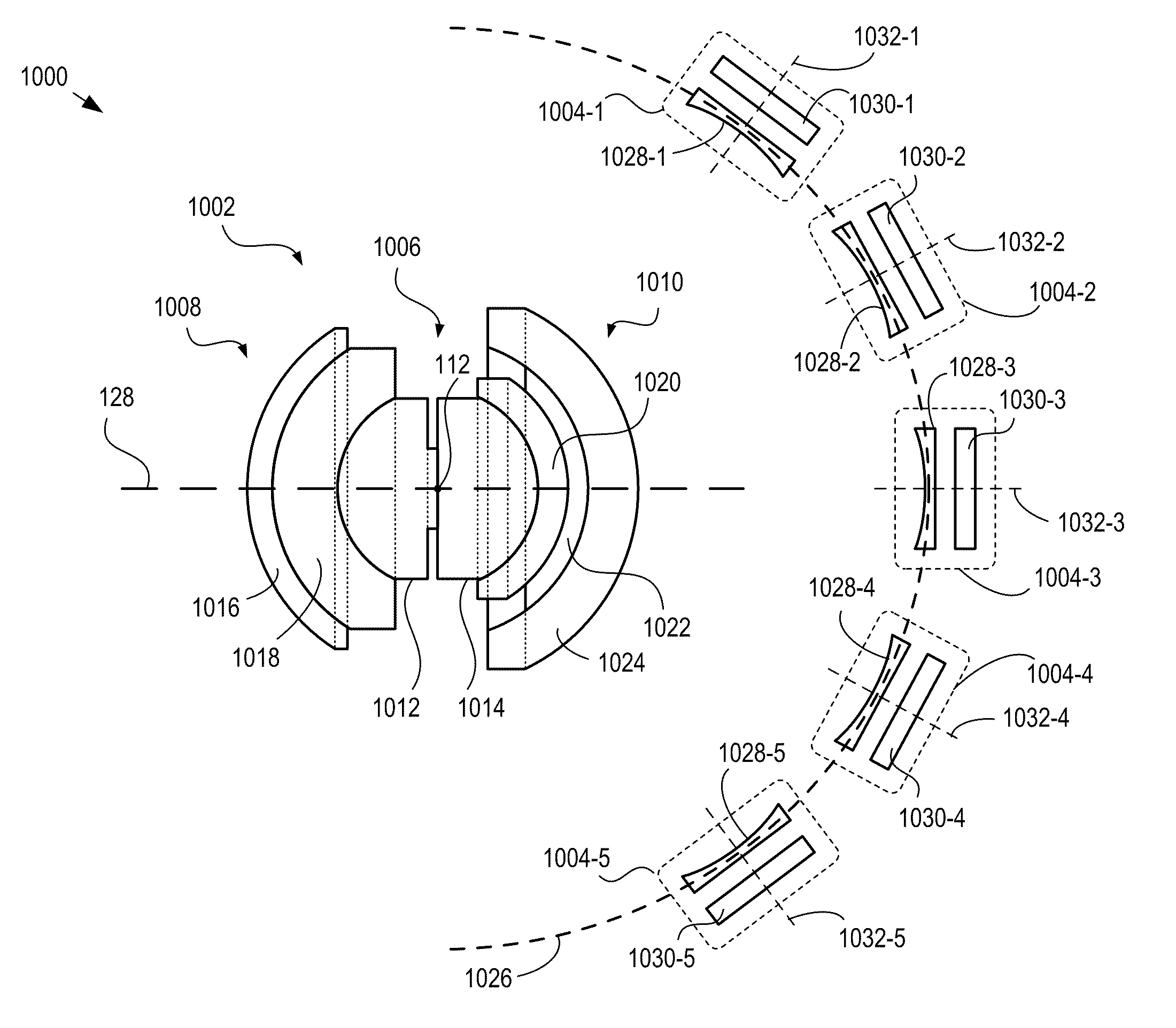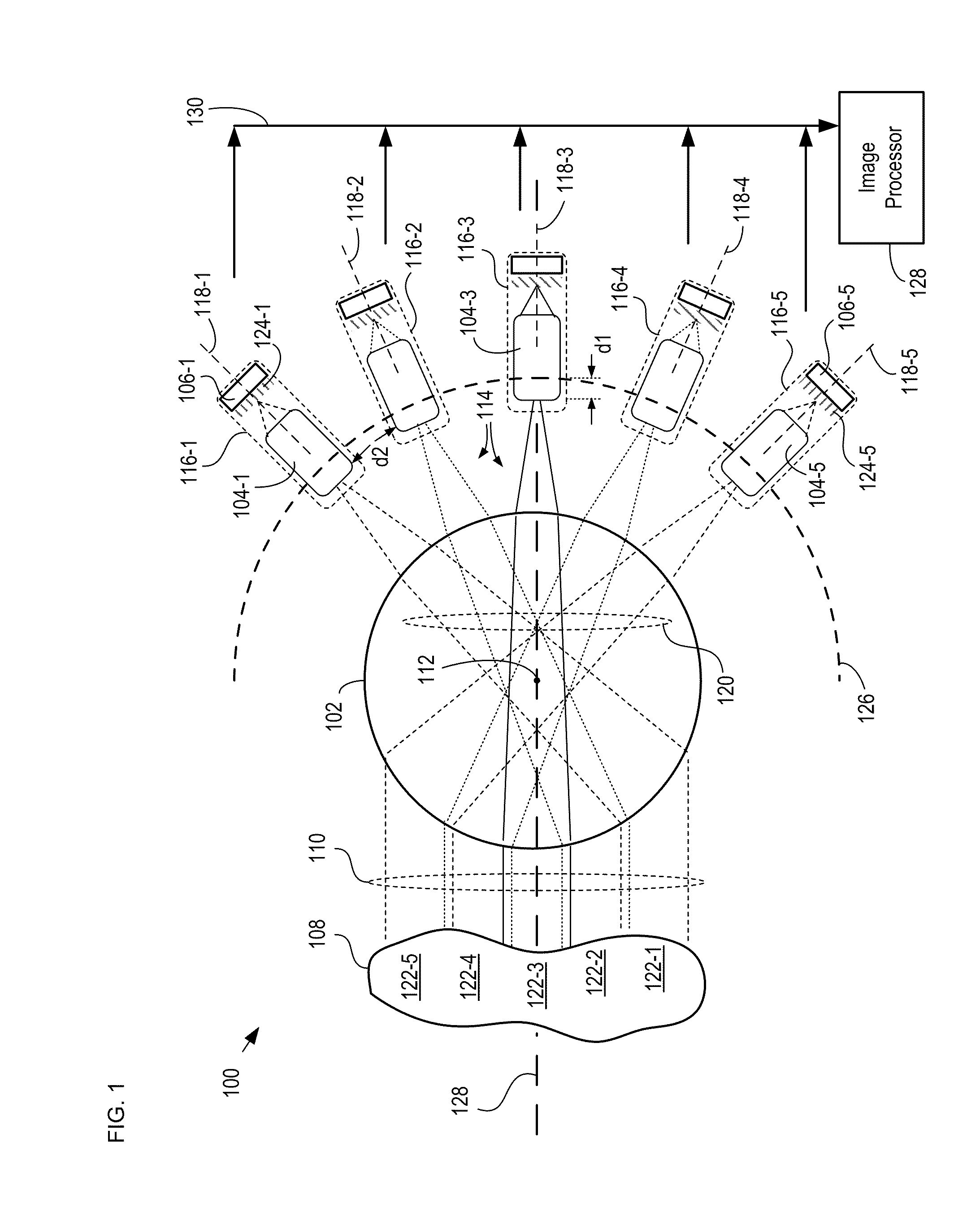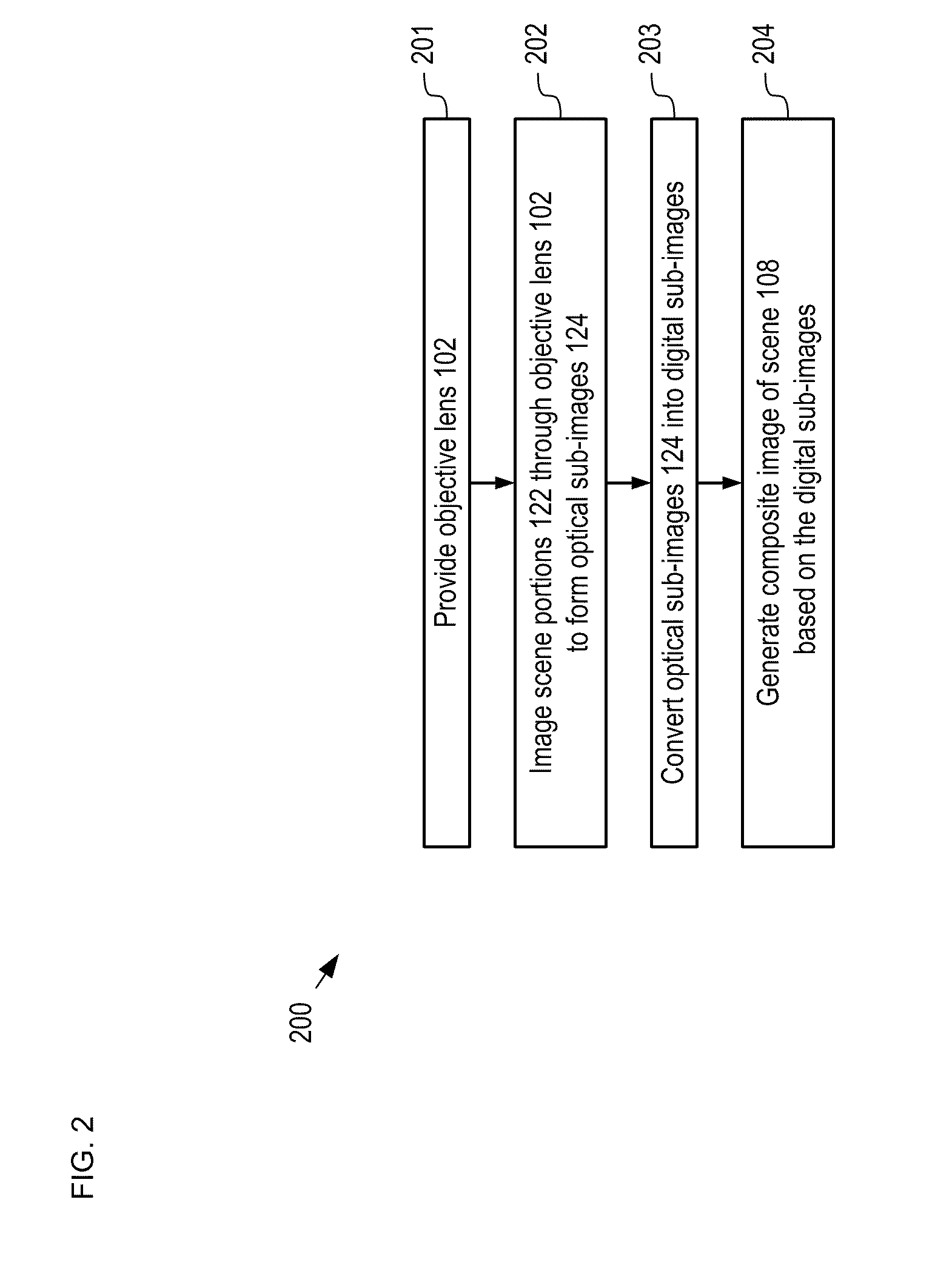Monocentric lens-based multi-scale optical systems and methods of use
a monocentric lens and optical system technology, applied in the field of optics, can solve the problems the angular resolution and the number of resolvable object points typically scale, and the optical performance of such camera systems begins to suffer, so as to reduce the magnitude of chromatic and spherical aberration correction, and reduce the magnitude of field curvature
- Summary
- Abstract
- Description
- Claims
- Application Information
AI Technical Summary
Benefits of technology
Problems solved by technology
Method used
Image
Examples
Embodiment Construction
[0036]The following terms are defined for use in this Specification, including the appended claims:[0037]Spherical is defined being characterized by (1) a common center of curvature and (2) a uniform radius of curvature. A spherical surface, for example, is a surface that has substantially the same shape as at least a portion of a sphere.[0038]Apochromatic is defined as focusing three or more wavelengths at substantially the same focal distance or image field.
[0039]This invention is a continuation-in-part of parent case U.S. patent application Ser. No. 12 / 651,894 filed 4 Jan. 2010, entitled “Multi-scale Optical System.”
[0040]As disclosed in the parent case, a multi-scale optical system comprises a single objective lens and an array of small secondary lenses. The objective lens and the secondary lenses collectively image a scene onto a plurality of sensor arrays, such as photodetector arrays, as a plurality of optical sub-images. Each secondary lens has a unique optical axis and imag...
PUM
 Login to View More
Login to View More Abstract
Description
Claims
Application Information
 Login to View More
Login to View More - R&D
- Intellectual Property
- Life Sciences
- Materials
- Tech Scout
- Unparalleled Data Quality
- Higher Quality Content
- 60% Fewer Hallucinations
Browse by: Latest US Patents, China's latest patents, Technical Efficacy Thesaurus, Application Domain, Technology Topic, Popular Technical Reports.
© 2025 PatSnap. All rights reserved.Legal|Privacy policy|Modern Slavery Act Transparency Statement|Sitemap|About US| Contact US: help@patsnap.com



